Illinois is home to some amazing wildlife and plants, but it’s also got a sneaky bunch of troublemakers who’ve taken over.
These invasive species don’t just show up for a visit. They crash the party, hog all the food, mess with native critters, and sometimes cause big headaches for farmers, gardeners, and city folks alike.
From birds that swoop in like feathery gangsters to bugs that chew everything in sight, here’s a look at 25 invaders shaking things up across Illinois… in ways that’ll surprise you.
Feisty Invaders in the Bird World
European Starling – The Shakespearean Stowaway
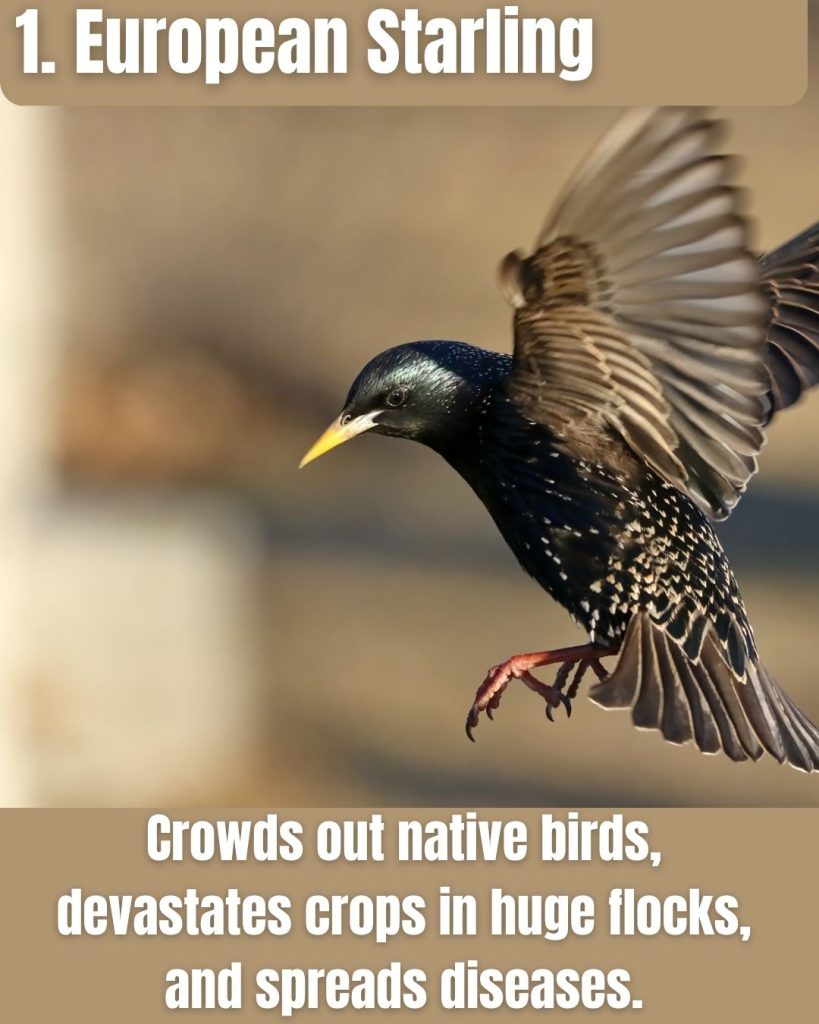
- Big flocks = big crop damage: They cost farmers millions each year.
- Disease spreaders: Their droppings can make people sick.
- Nest bullies: Starlings fight hard for nesting spots, even killing other birds’ babies.
Imagine someone released birds just because Shakespeare mentioned them. That’s how the European starling arrived in the 1890s.
These shiny black birds now form huge flocks called murmurations, thousands swirling together in an incredible sight.
They devour grain, chase off native birds like bluebirds, and their droppings spread diseases and create messy problems in towns.
House Sparrow – The Brown Bully
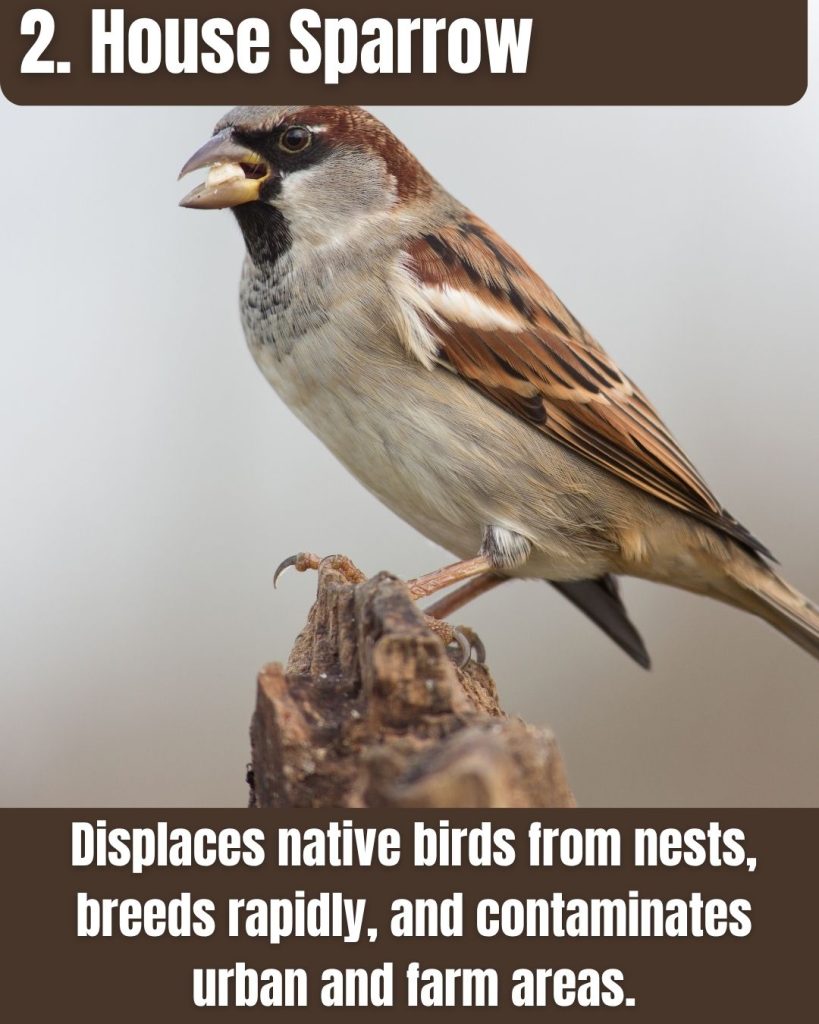
- Nest hoggers: Ousting native bluebirds and wrens.
- Urban breeders: They crank out 2-3 broods a year, turning a few sparrows into a noisy crowd fast.
- Mess makers: Their nests clog vents and their droppings can spread diseases.
This small brown bird arrived in the 1850s to eat bugs but became a feisty city dweller that never quits.
House sparrows kick out native birds from nests and sometimes destroy eggs to take over. They raid crumbs at fast-food spots and sneak into stores to steal birdseed.
Rock Pigeon – The “City Rat” with Wings
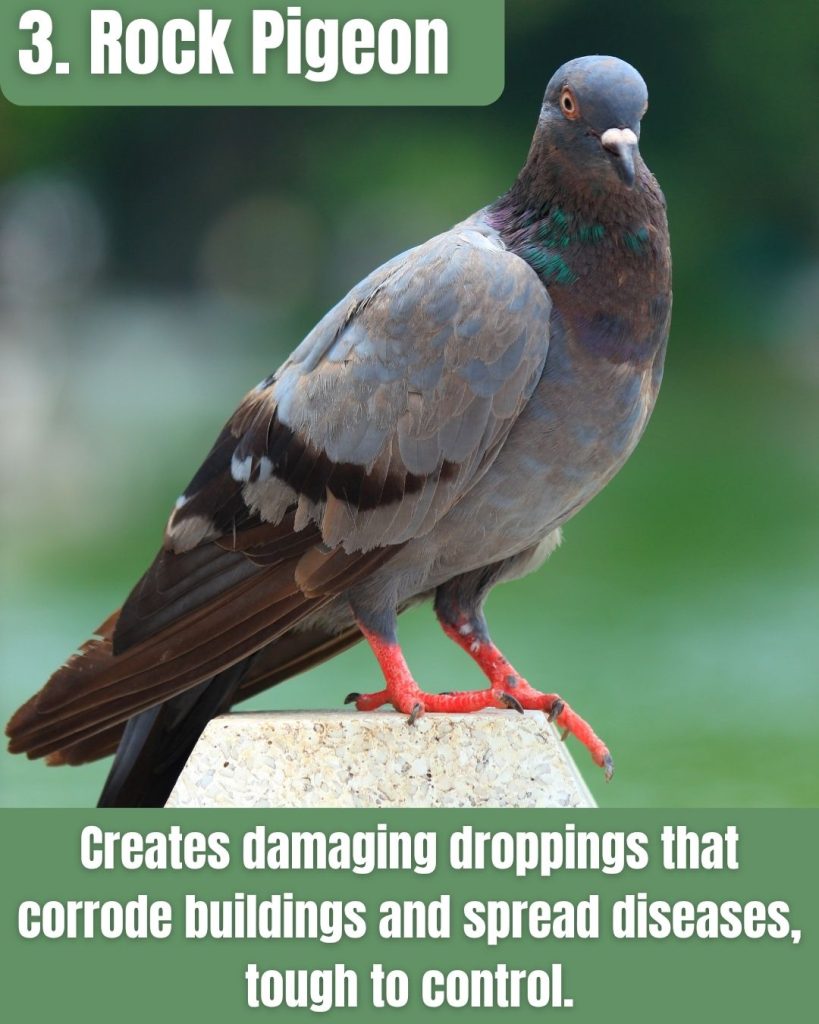
- Messy roosts: Cleaning up after pigeons costs big bucks.
- Disease carriers: Fungi in droppings can cause respiratory issues.
- Smart survivors: They nest everywhere and are tough to scare off.
You know these gray pigeons hanging around city squares, strutting on statues, and gobbling fries. Originally from Europe, many escaped and made cities like Chicago their home.
Their droppings corrode buildings and monuments, spread diseases, and their nests clog gutters and damage rooftops.
Mute Swan – The Elegant Bully of the Waters
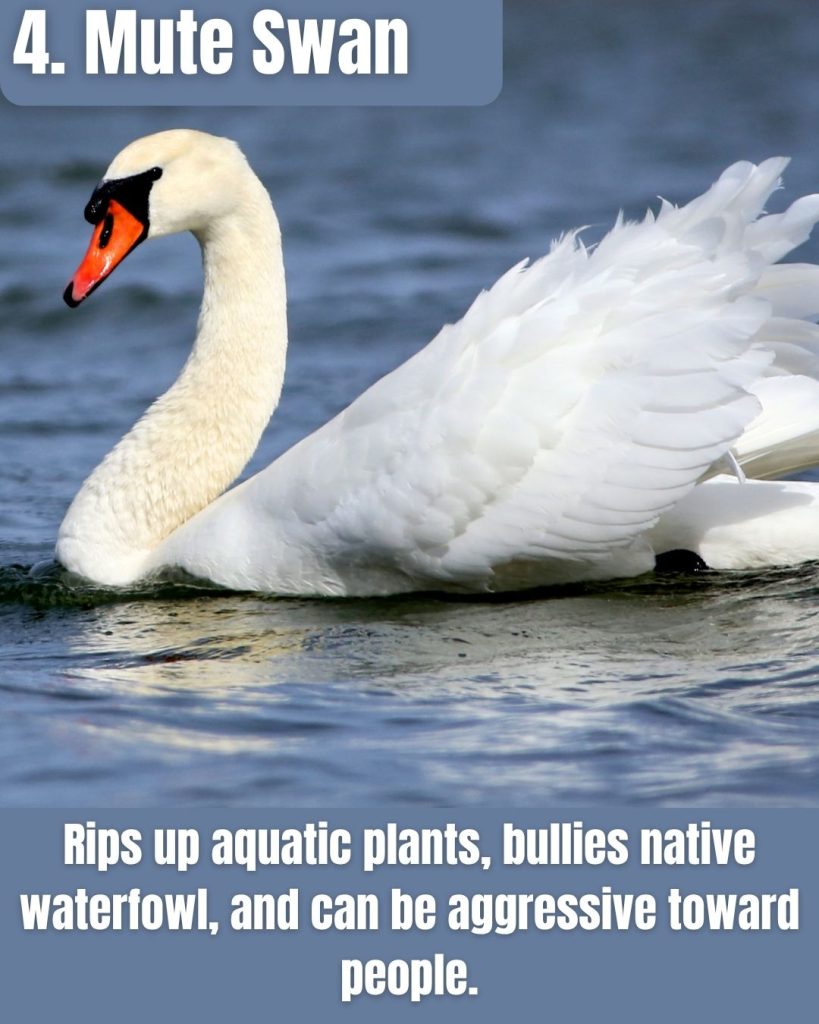
- Plant demolishers: Eating up to 8 pounds of underwater plants a day.
- Territorial brawlers: They chase away native birds and protect their turf fiercely.
- Human hazard: They can be aggressive and even dangerous.
At first glance, mute swans look like graceful pond ornaments. But don’t be fooled. These huge white birds eat and uproot massive amounts of aquatic plants, wrecking habitats fish and native waterfowl depend on.
They’re territorial to the point of danger, chasing off native swans, geese, and even attacking people. In fact, a man kayaking in Illinois drowned after a swan capsized his boat.
Monk Parakeet – The Unexpected Urban Parrot
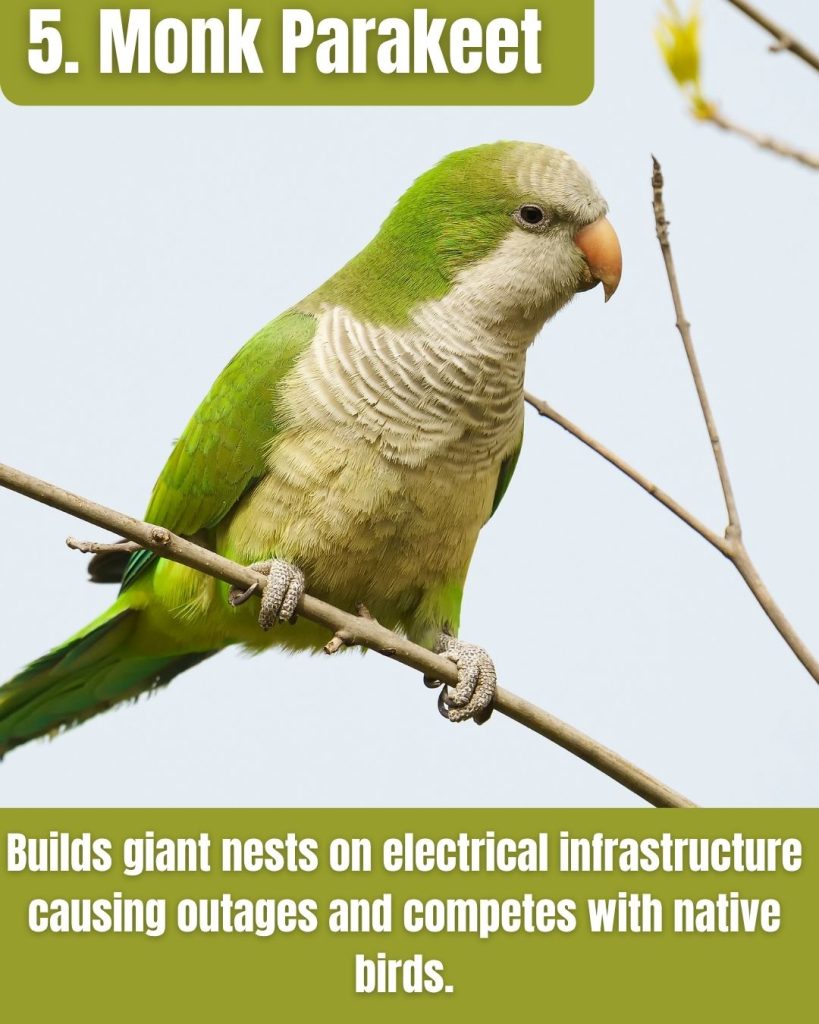
- Nest engineers: Their huge nests can weigh hundreds of pounds and short out electrical equipment.
- Winter warriors: They survive Illinois’ cold by cozying up in insulated nests.
- Beak power: They’re strong enough to fend off predators and cause real damage.
Bright green parrots in Chicago? Yep! These little birds escaped or were released from the pet trade in the 1970s and now thrive in city parks and neighborhoods.
Unlike most parrots, monk parakeets build massive communal stick nests on power lines and cell towers, causing electrical fires and outages.
They survive cold winters by huddling together and love snacking on birdseed and fruits, making them tough urban survivors.
Bugs That Bite Back
Emerald Ash Borer – The Tiny Tree Killer
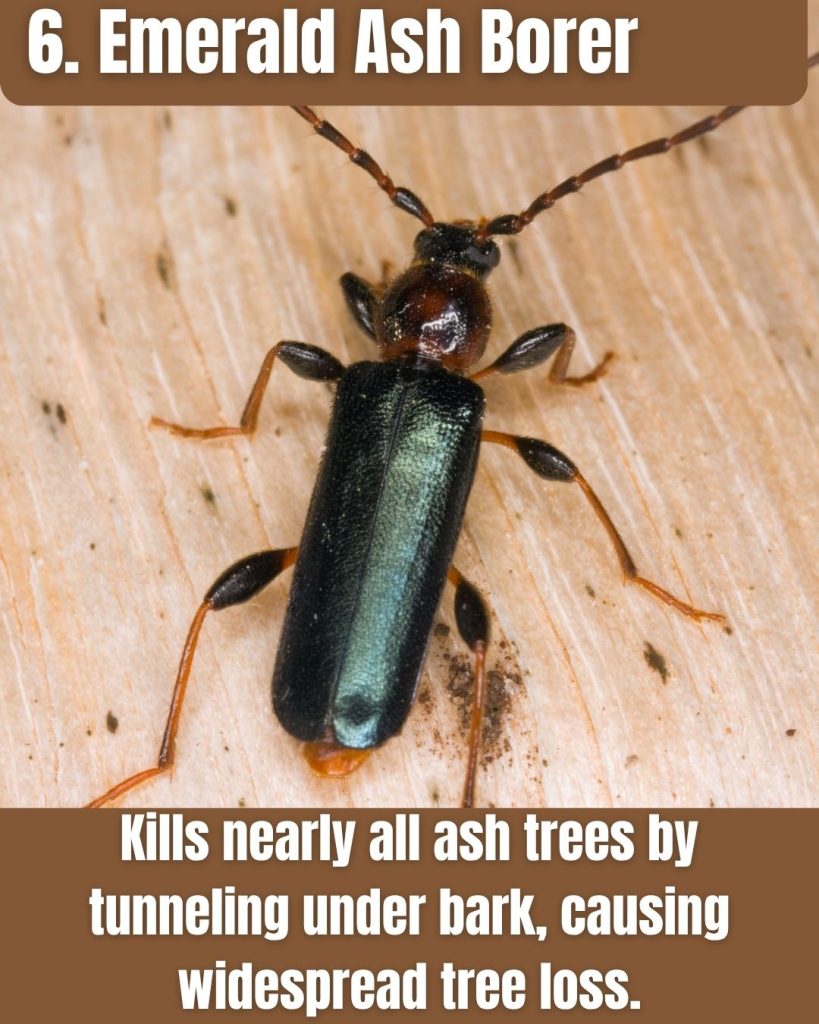
- Tree assassin: Kills ash trees within 3-5 years.
- Widespread invasion: Half of Illinois counties have been hit.
- Big bills: Removal and replacement cost towns millions.
This shimmering green beetle might be small, but it has caused massive destruction by killing ash trees all over Illinois since 2006.
Its larvae burrow under bark, cutting off the tree’s nutrients, and in just a few years, a healthy ash tree is dead.
With ash trees making up about 20% of urban street trees before, many neighborhoods lost their shady canopies.
Asian Longhorned Beetle – The Hardwood Threat
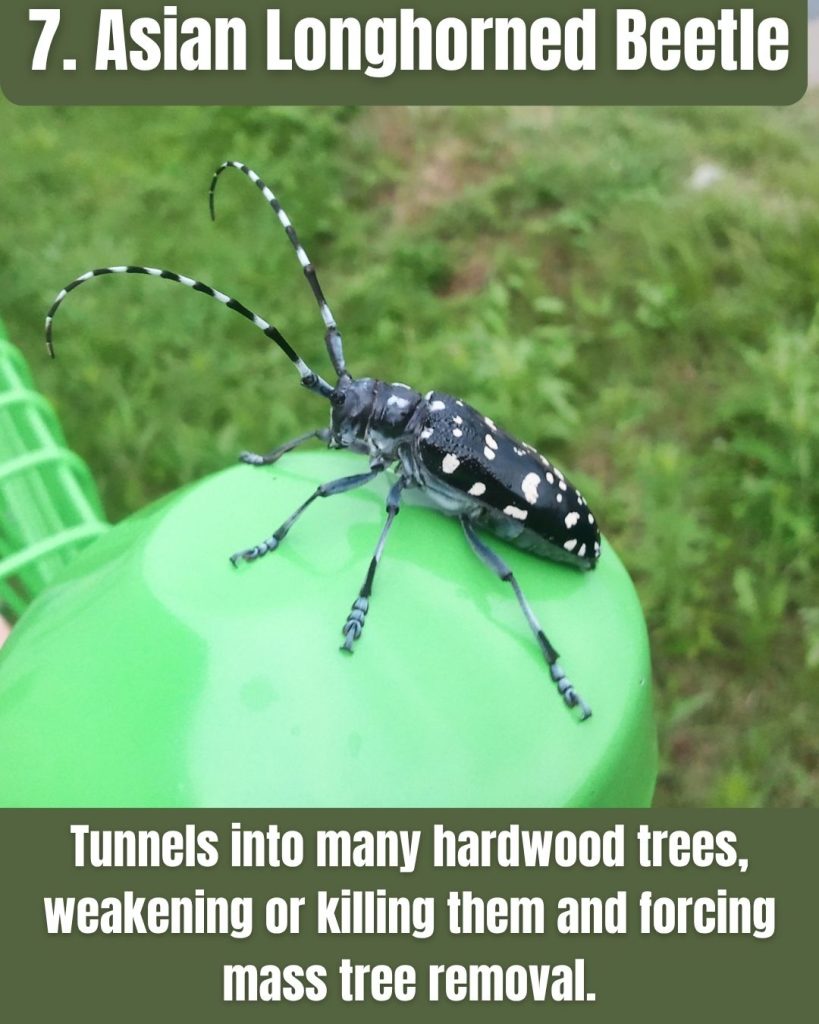
- Hardwood menace: Loves maples and many other trees.
- Big exit holes: Round holes about the size of a bullet show their presence.
- Tough control: No traps or lures mean cutting infested trees is the only option.
This black-and-white spotted beetle looks exotic but spells disaster for maples, elms, and other hardwoods.
First found in Chicago in 1998, it tunnels inside trees, weakening and eventually killing them.
Officials had to cut down over 1,500 trees to stop the spread, a tough but necessary move.
Japanese Beetle – The Garden Nightmare
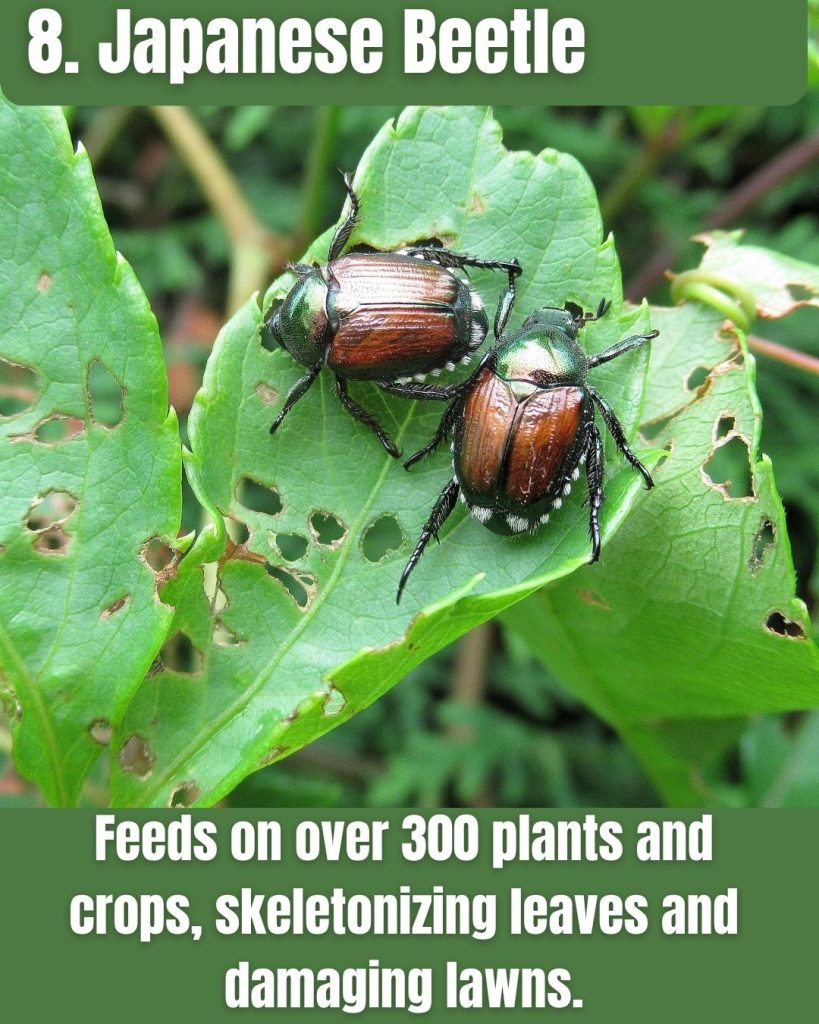
- Plant-eating machines: Attacking gardens and crops alike.
- Lawn destroyers: Grub damage causes dead grass patches.
- Hard to beat: They fly in from everywhere, and traps can sometimes backfire.
With shiny green heads and copper wings, these beetles swarm in summer to munch on roses, corn, soybeans, and over 300 plant species.
They skeletonize leaves, leaving plants looking lacey and brown. The larvae (grubs) chew turf roots underground, killing lawns and attracting skunks digging for a snack.
Spongy Moth – The Forest Caterpillar Army
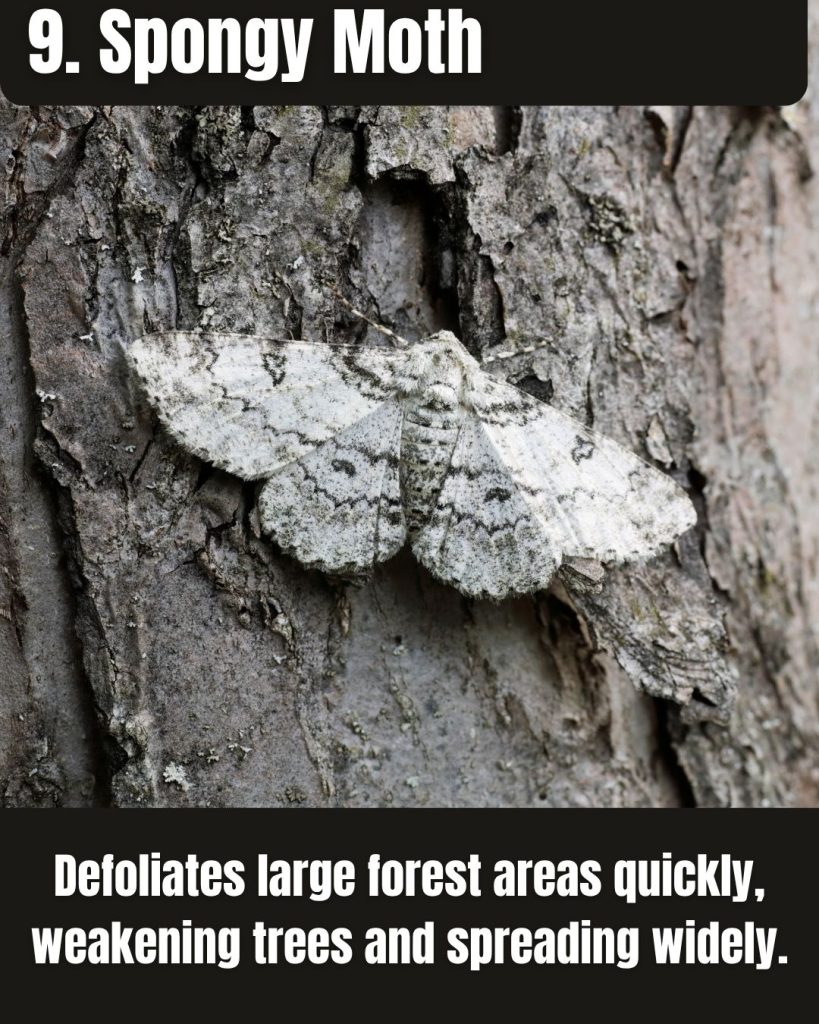
- Caterpillar rain: Imagine caterpillars dropping like raindrops!
- Tree buffet: Defoliates hundreds of IL tree species.
- Spreads by humans: Egg masses hitch rides on firewood and vehicles.
Formerly known as the “gypsy moth,” these caterpillars swarm and devour the leaves of hundreds of trees, especially oaks.
In bad years, they can strip entire forests bare. Their droppings and hairy bodies can annoy people and pets. Illinois fights them with quarantine zones and spraying programs.
Brown Marmorated Stink Bug – The Smelly Pest
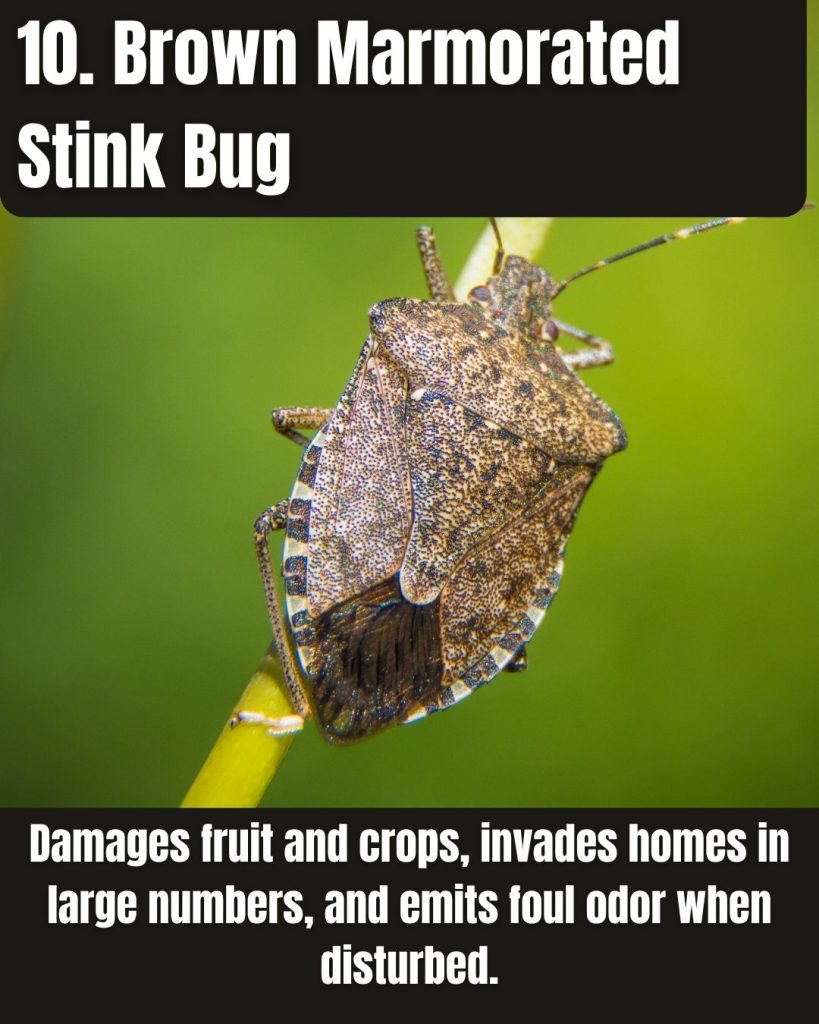
- Crop destroyer: Leaves ugly pits and rot on fruit.
- Unwelcome houseguest: Invades buildings in fall.
- Stink defense: Releases a foul smell when disturbed.
This brown bug doesn’t just stink, it wrecks fruit crops from apples to soybeans. When the weather cools, it sneaks into homes by the hundreds, seeking warmth.
They don’t bite, but squish one and you’ll wish you hadn’t. They’re tough to get rid of and have no natural enemies here.
Mammal Mayhem: Non-Bird, Non-Insect Invaders
Feral Swine – The Wild Boar Brigade
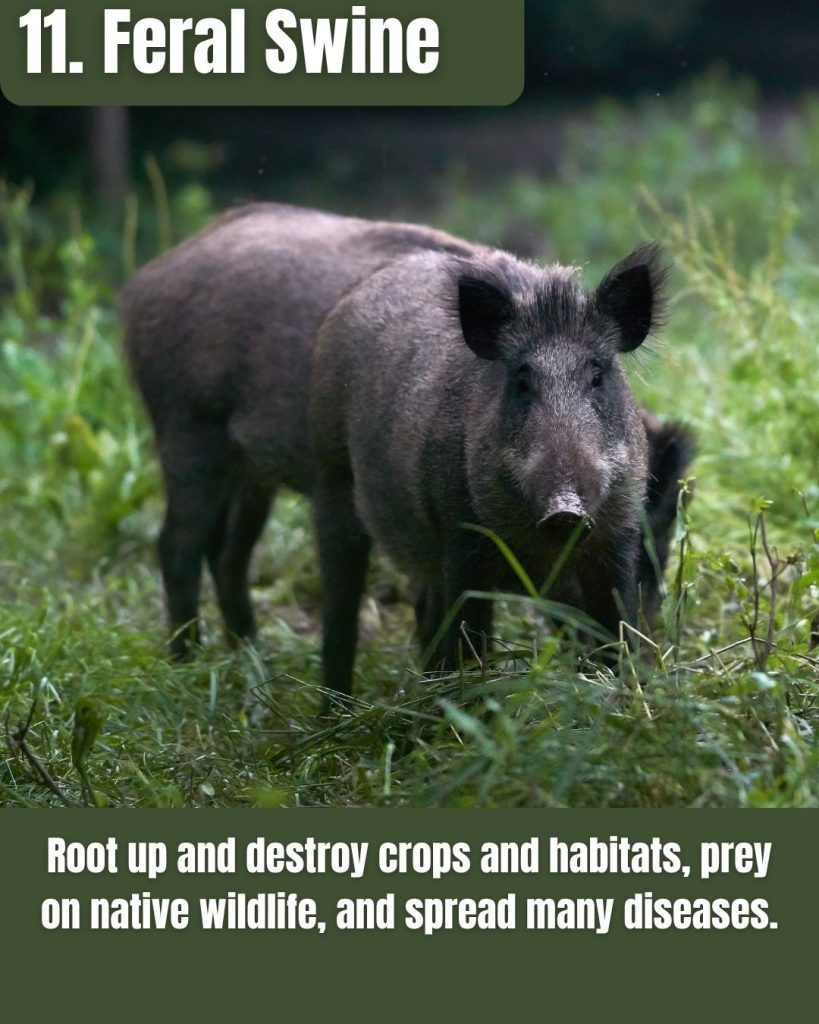
- Nature’s rototillers: They uproot soil and ruin crops.
- Wildlife bullies: Eat other animals and hog food sources.
- Disease risks: Carry over 30 diseases that threaten livestock and humans.
These wild pigs aren’t just rooting around, they’re tearing up crops, forests, and wetlands across southern Illinois.
Originating from escaped domestic pigs and illegal releases, they can reproduce fast (up to two litters a year!) and destroy acres in one night.
They compete with deer and turkey and eat eggs, fawns, and basically anything they can catch. Plus, they spread nasty diseases.
Illinois has been quick to trap and remove feral hogs before they take over, a rare success story worth celebrating.
Norway Rat – The Urban Survivor
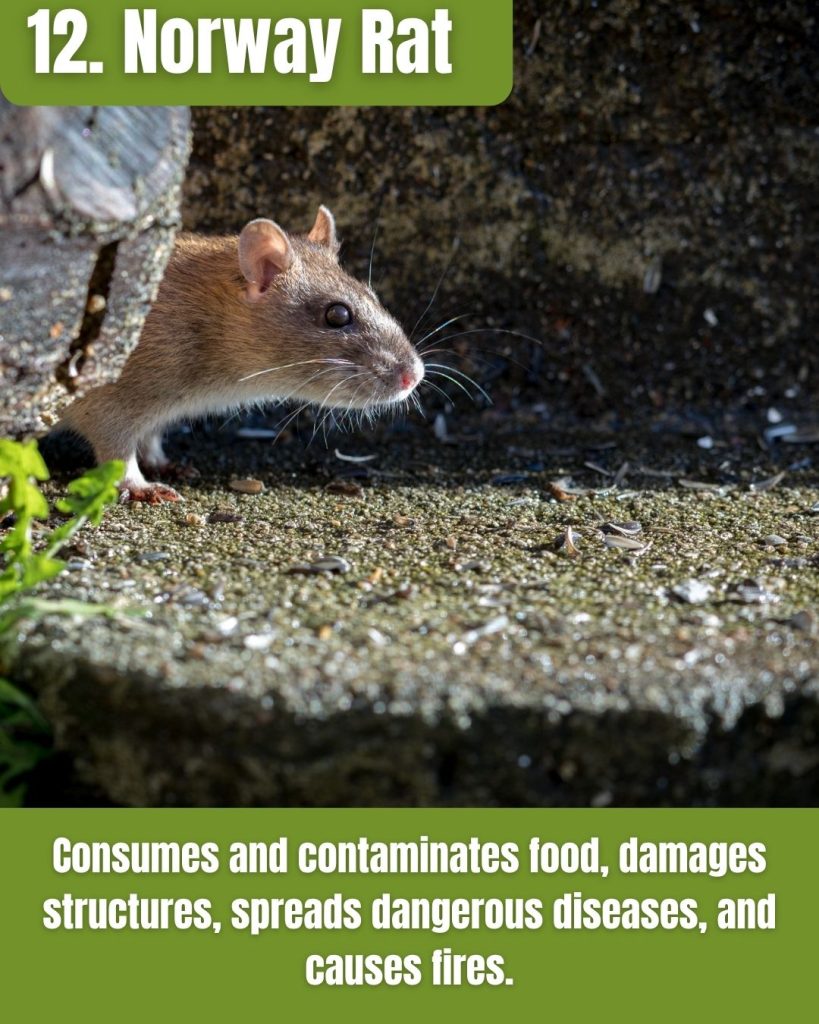
- Super breeders: Females give birth to large litters every few weeks.
- Disease spreaders: Carry hantavirus, leptospirosis, and more.
- Damage dealers: Chew up infrastructure and cause fires.
The brown Norway rat is the ultimate city slicker, living anywhere humans provide food and shelter.
Chewing through wood, pipes, wiring, and causing fires, they’re more than a nuisance; they spread diseases and cause billions in damage yearly.
Chicago fights a constant war against these stealthy rodents.
Nutria – The Wetland Wreckers
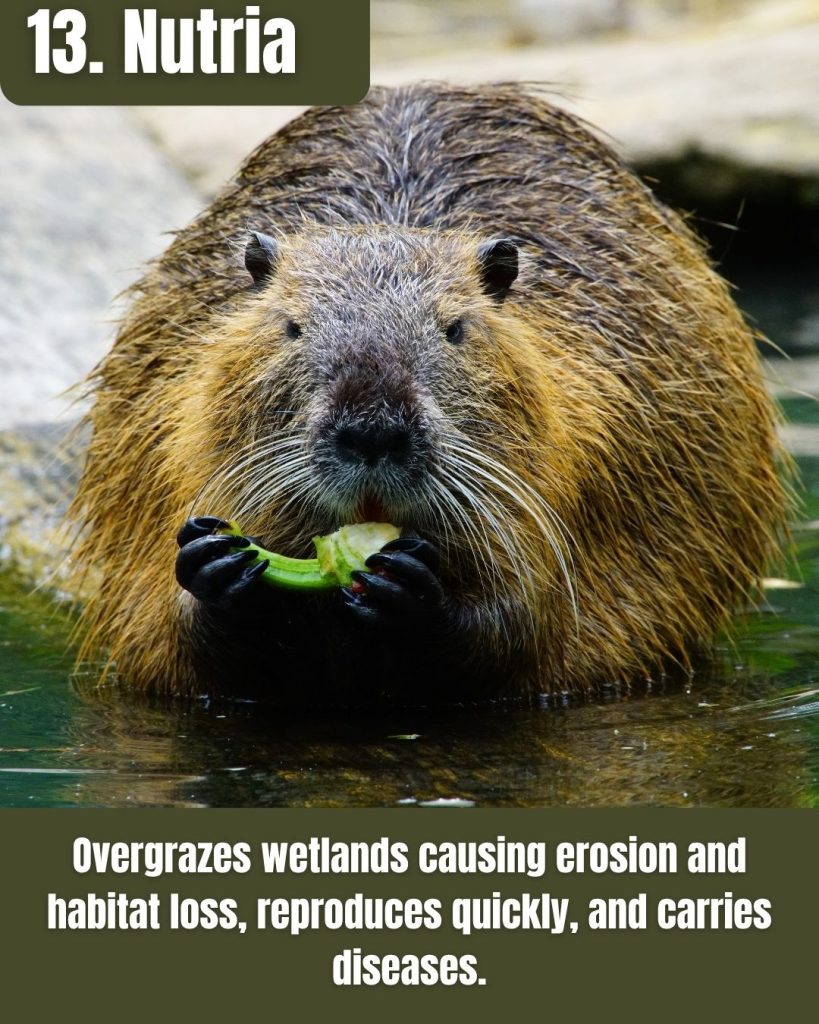
- Marsh munchers: They can eat 25% of their body weight daily.
- Erosion accelerators: Dig burrows that weaken levees.
- Fast breeders: They can reproduce up to three times a year.
These big semi-aquatic rodents look like oversized rats with orange teeth. Nutria escaped from fur farms and have devastated wetlands in southern states.
They chow through marsh plants, causing erosion and flooding problems. Recently spotted in Illinois, they’re a red flag for wetland health.
Efforts are underway to catch and remove nutria before they spread widely.
Jumping Worms – The Soil Shakers
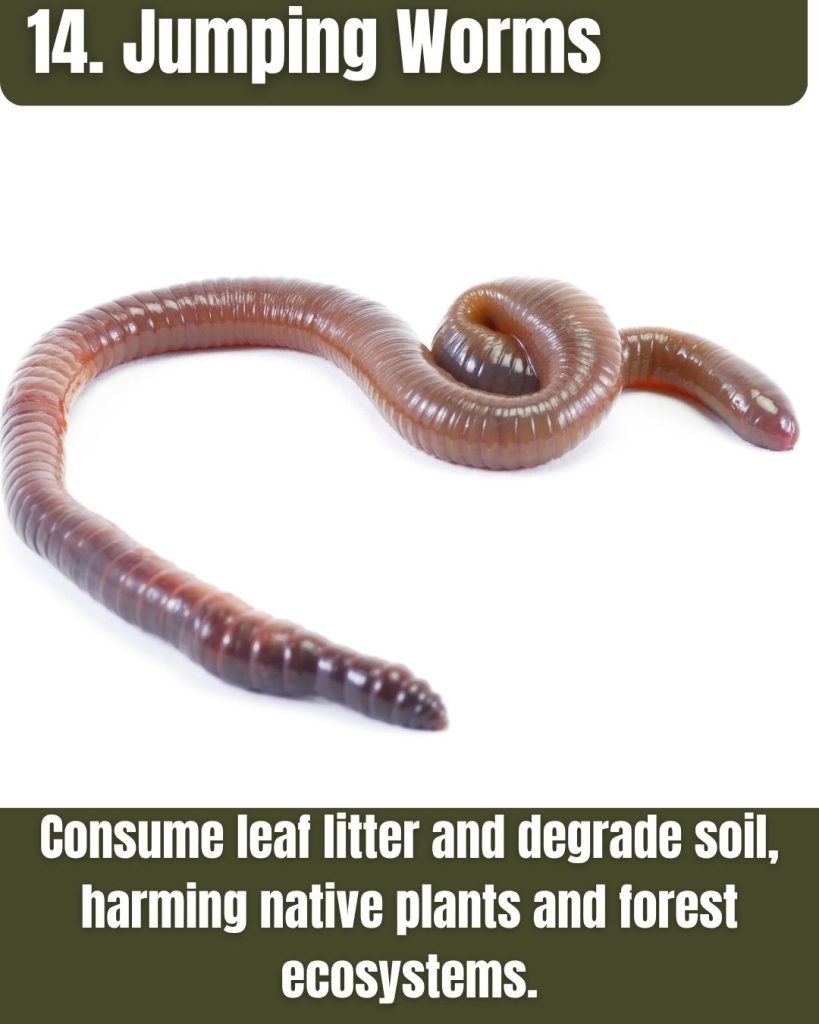
- Leaf litter vacuum cleaners : They wipe out the forest floor’s mulch layer.
- Soil structure changers: Make soil dry and crumbly.
- Garden invaders: Very hard to get rid of once they arrive.
These worms don’t wiggle, they jump! Native to Asia, they’re spreading fast in Illinois gardens and forests.
Unlike normal earthworms that mix soil, jumping worms eat the leaf litter so fast they leave soil like coffee grounds.
This ruins soil health and makes it hard for native plants to grow.
They hitchhike on potted plants, mulch, and garden tools, so gardeners should watch out!
Feral Cats – The Controversial Hunters
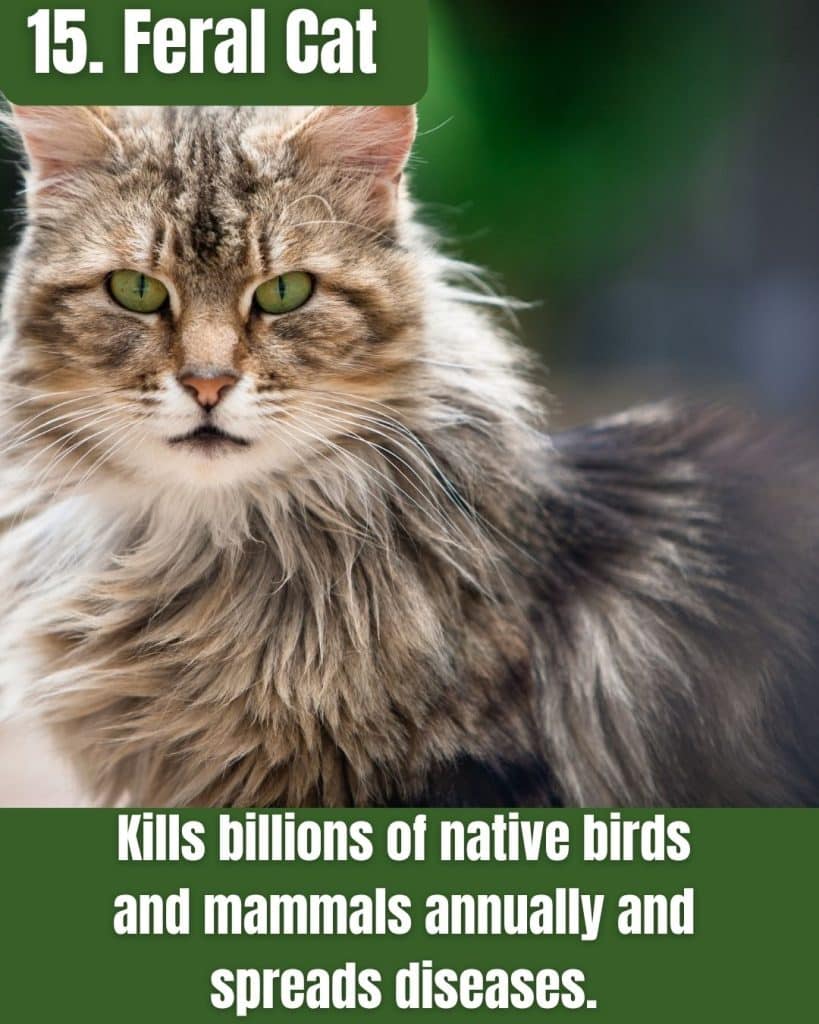
- Wild hunters: Kill more than they need, impacting native wildlife.
- Disease reservoirs: Can spread feline leukemia, toxoplasmosis, and rabies.
- Management dilemma: Balancing animal welfare with conservation is tough.
Feral cats may look cute, but they’re top predators that kill billions of birds and small mammals nationwide every year.
In Illinois, feral cat colonies impact songbirds, rabbits, and even endangered species. They reproduce fast and are fed by people, making control tricky and often controversial.
Experts agree keeping pet cats indoors is the best way to protect wildlife.
Trouble in the Trees and Fields: Invasive Plants Taking Over
Amur Honeysuckle – The Understory Thief
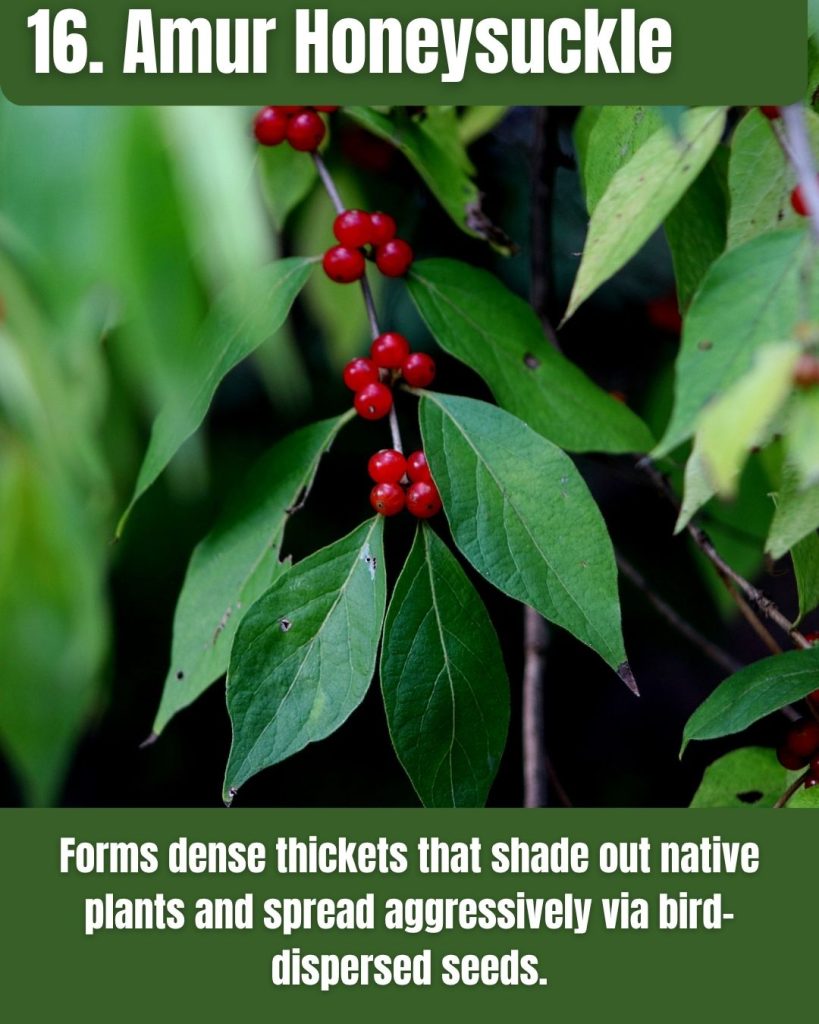
- Dense thickets: Crowds out native plants.
- Early leaf-out: Steals sunlight from natives.
- Bird-spread seeds: Pops up in remote forests and parks.
This bush came from Asia to help with erosion control, but now chokes Illinois forests with thick, early-leafing branches that shade out wildflowers and tree seedlings.
Birds love its berries, junk food that spreads the plant far and wide.
Common Buckthorn – The Hedgerow Hog
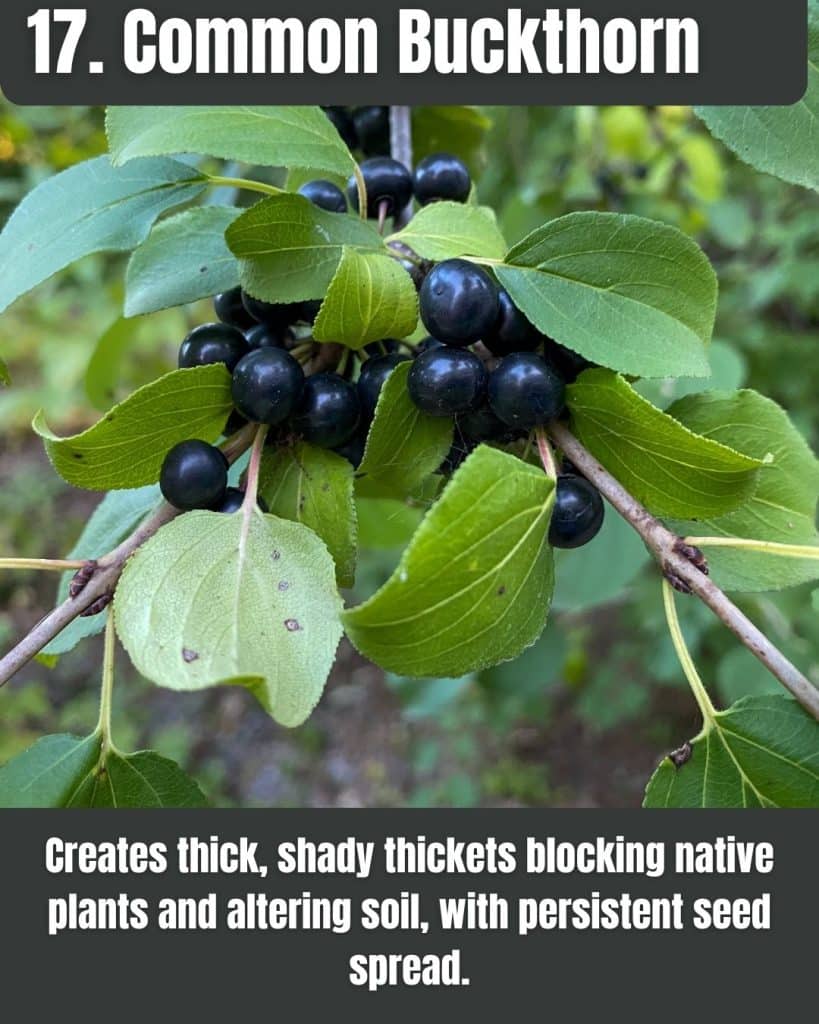
- Wall of shade: Blocks sunlight and kills diversity.
- Long leaf season: Outcompetes native trees and plants.
- Persistent seeds: It’s tough to remove, with no natural enemies.
Once popular as a tough hedge plant from Europe, buckthorn now takes over woodlands with dense, dark thickets.
It leafs out early, holds onto leaves late, and produces black berries that birds spread everywhere.
Garlic Mustard – The Forest Floor Invader
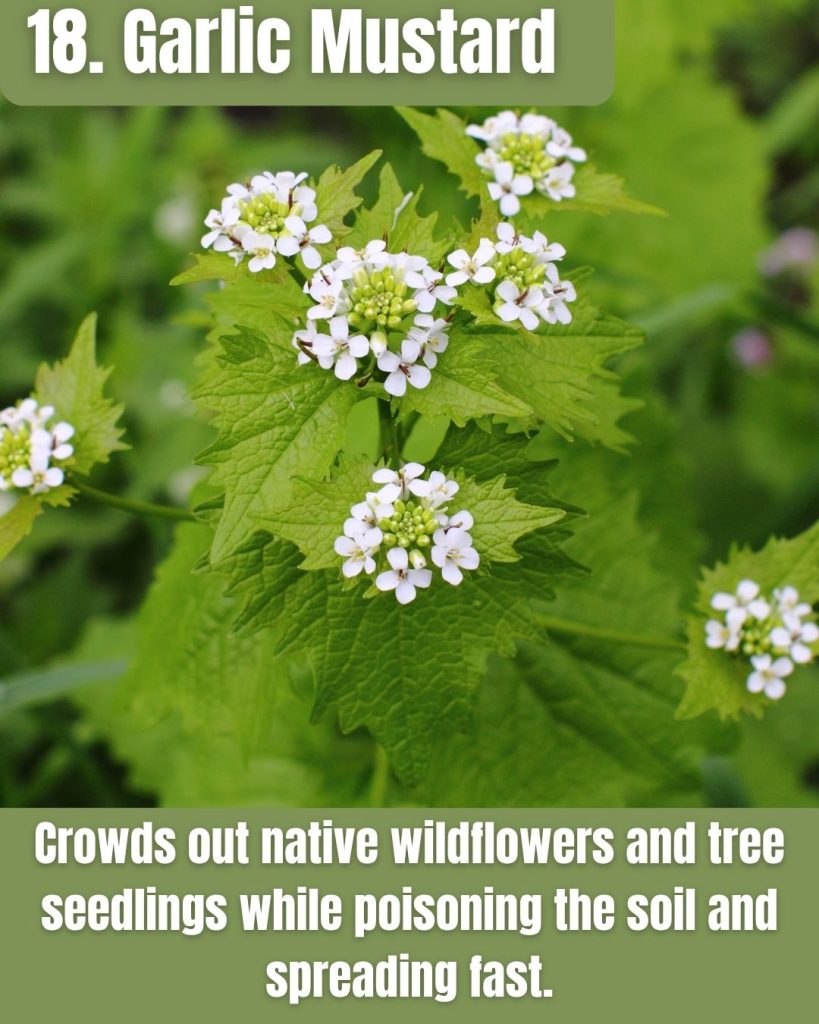
- Spring carpet: Outcompetes wildflowers and tree seedlings.
- Soil poisoner: Messes with helpful fungi natives need.
- Seed explosion: Seeds last years and spread easily.
This 2-3 foot tall herb sneaks into forests, growing before natives even wake up.
It spreads thousands of seeds and releases chemicals that poison the soil, making it hard for native plants to grow.
Callery (Bradford) Pear – The Pretty Problem
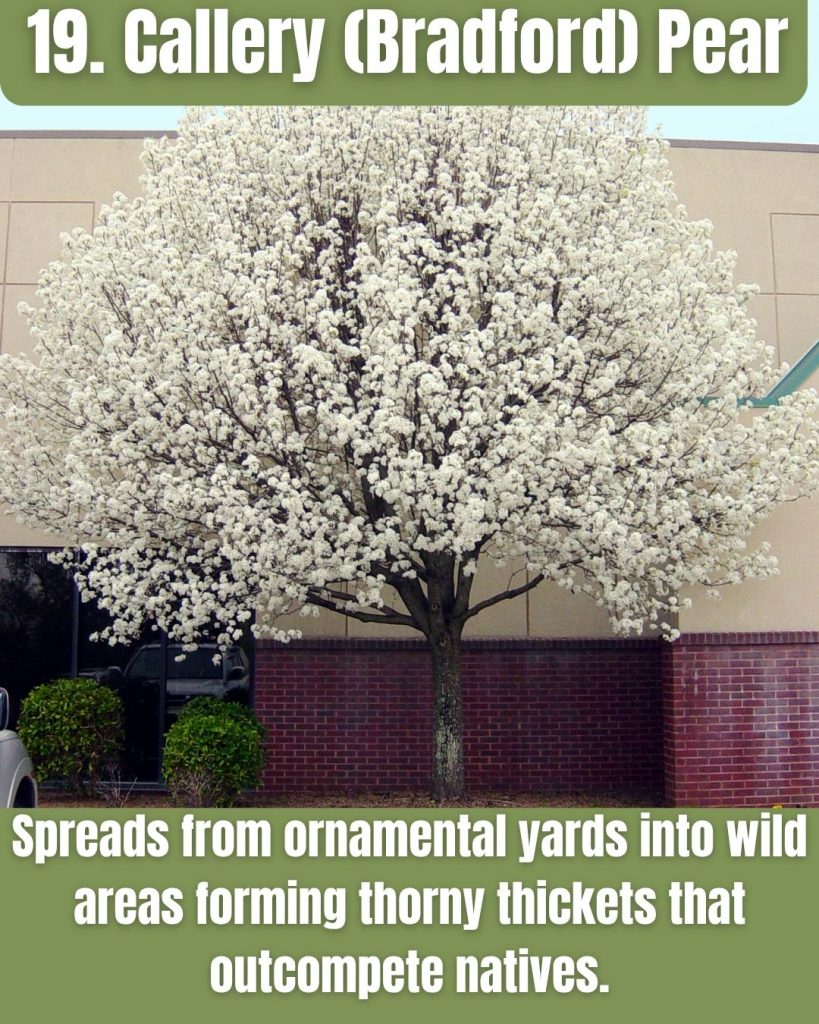
- From yard to wild: Birds spread seeds far and wide.
- Thorny thickets: Bainful and persistent.
- Weak branches: Many planted trees break in storms, causing damage.
Famous for their beautiful spring blooms, these trees seemed harmless, until they started producing fruit and spreading like weed
Now, thorny wild pear thickets invade prairies and pastures, outgrowing native trees and creating tough-to-remove thorn walls.
Autumn Olive – The Soil Changer
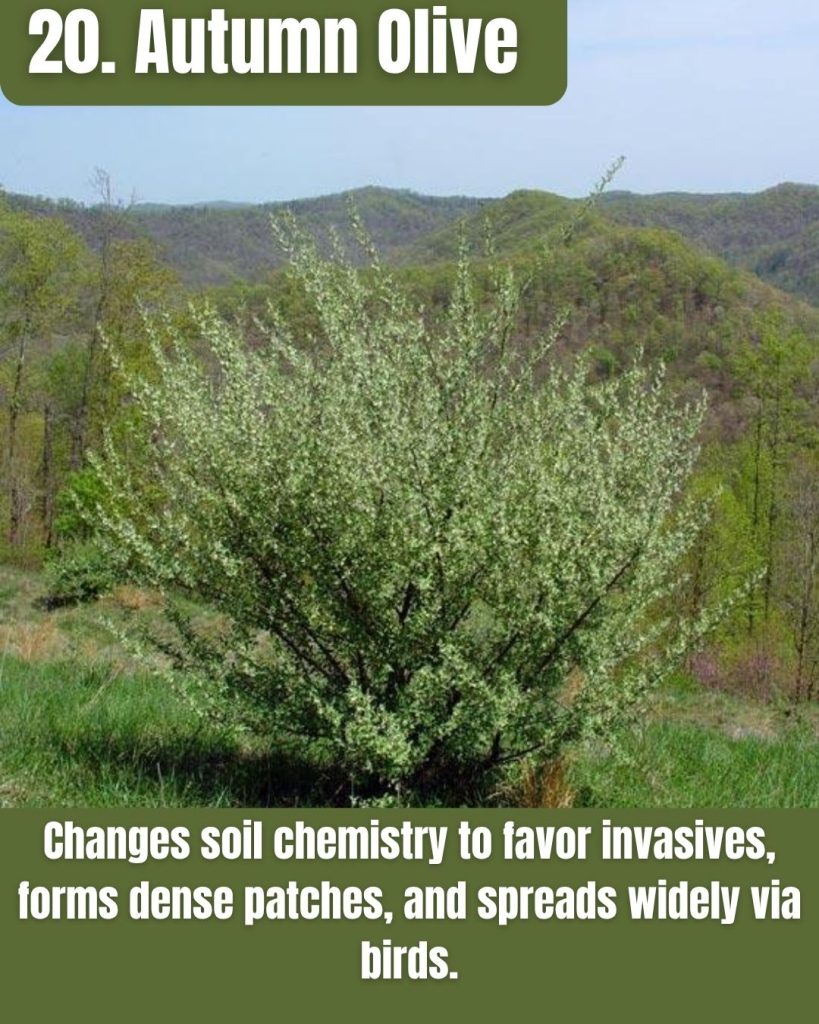
- Soil changer: Adds nitrogen, favoring other invasives.
- Berry bomb: Birds spread seeds everywhere.
- Habitat loser: Less valuable cover and food for native wildlife.
Originally planted for wildlife and erosion control, this shrub pumps nitrogen into poor soils, upsetting the balance native prairie plants depend on.
It forms dense patches and spreads quickly via tasty red berries eaten by birds.
Invaders of Illinois’ Waters: Fish, Mussels & Plants
Asian Carp – The Jumping Giants
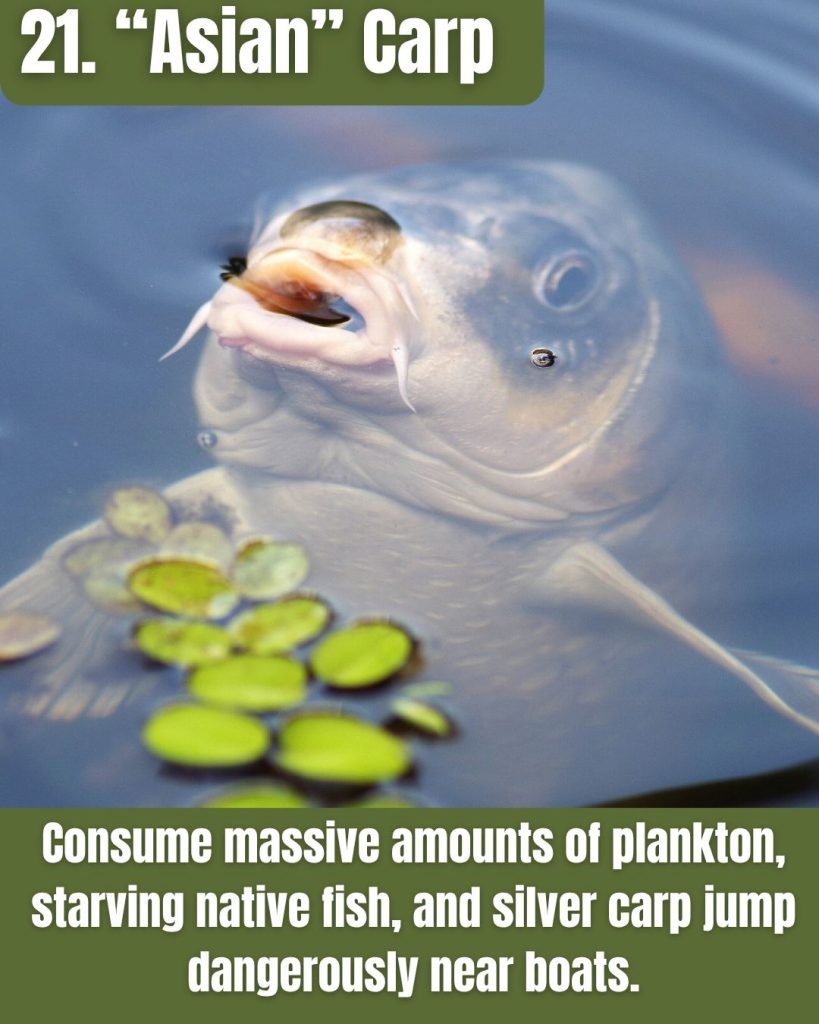
- Plankton eaters: Outcompete the native fish population.
- Flying carp: Jumpers that can hurt boaters.
- Repro machines: Females lay hundreds of thousands of eggs.
Silver and bighead carp were brought in to clean fish ponds but escaped into Illinois rivers. They eat tons of plankton, starving native fish and mussels.
Silver carp are famous for leaping out of water and hitting boats, sometimes injuring people
Efforts include electric barriers and fishing promotions to control their spread.
Zebra Mussel – The Tiny Water Invader
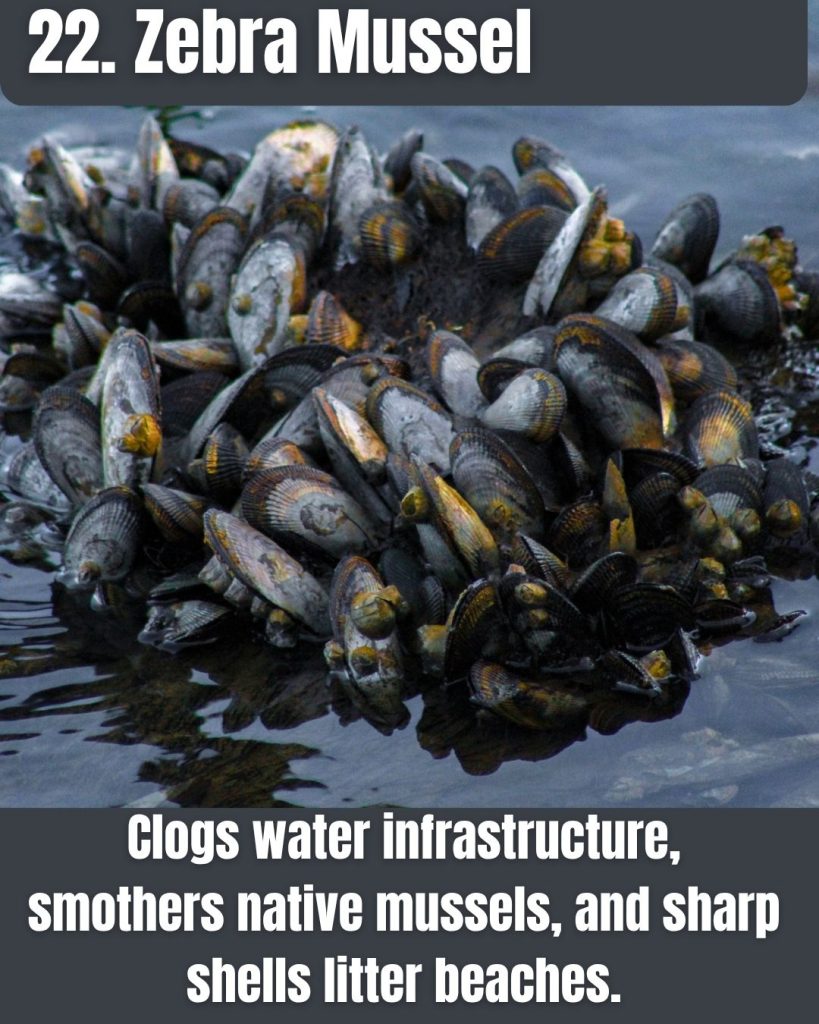
- Pipe cloggers: Millions spent cleaning up the damage these guys have caused.
- Native mussel killers: They smother endangered species.
- Sharp shells: Painful to step on and a nuisance to swimmers.
These fingernail-sized mussels hitch rides on boats and have clogged pipes and power plants.
They cover native mussels, suffocating them, and clear the water so much it changes aquatic habitats, sometimes causing nasty algae blooms.
Eurasian Watermilfoil – The Weed That Won’t Quit

- Boat trap: It tangles propellers and fishing lines.
- Native plant killer: Chokes out beneficial species.
- Fragment spreader: Tiny bits start whole new infestations.
This underwater plant grows thick mats that clog boats and block sunlight from native aquatic plants.
It spreads by breaking into pieces, which can hitch rides on boats, quickly turning a clear lake into a green tangle.
Purple Loosestrife – The Pretty But Deadly Wetland Invader
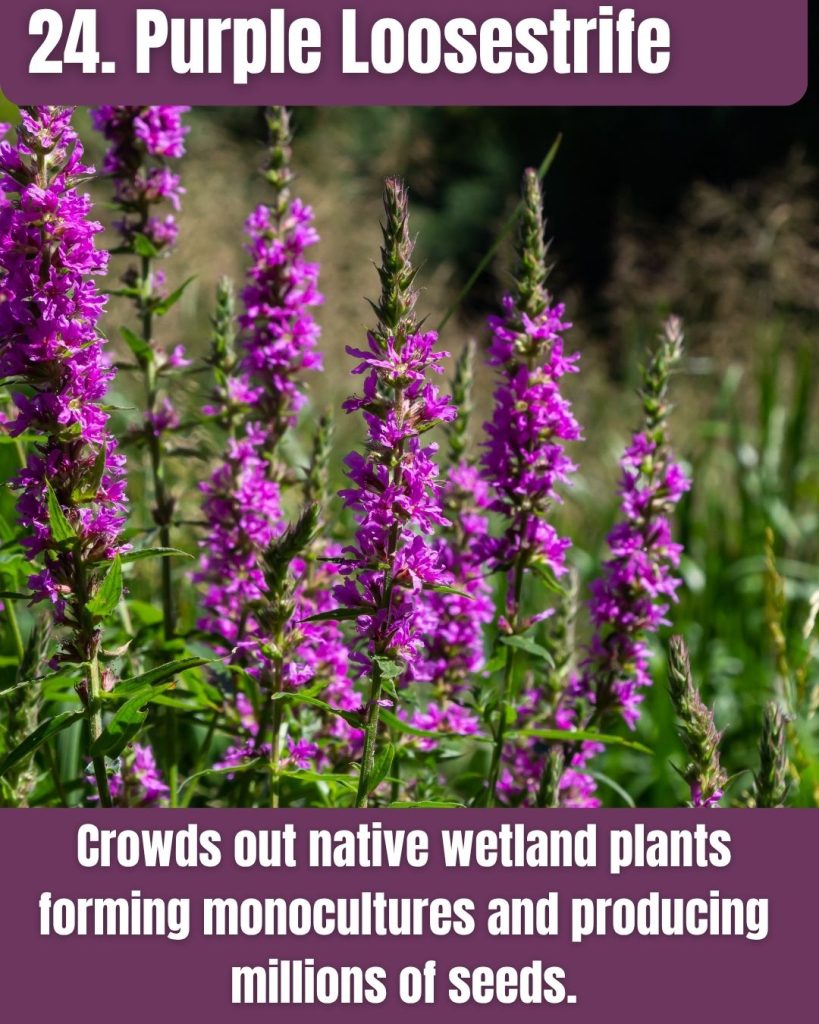
- Wetland choker: Displaces critical habitat plants.
- Seed machine: Can produce millions of tiny seeds.
- Biocontrol success: Beetles are fighting back.
Those tall spikes of purple flowers may look nice, but loosestrife crowds out cattails and other native wetland plants, turning rich marshes into “green deserts” where wildlife struggles to survive.
Fortunately, tiny leaf-eating beetles have helped bring it under control.
Round Goby – The Bottom-Dwelling Fish Invader
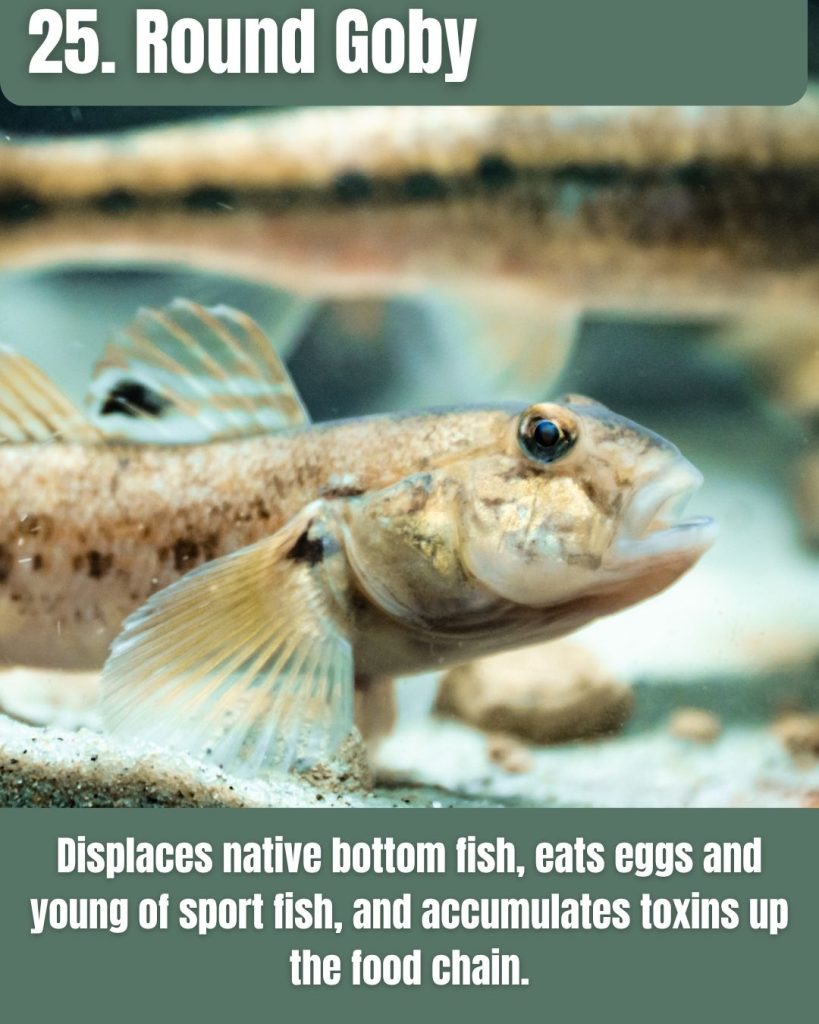
- Aggressive bottom dweller: Aggressively pushes out natives.
- Egg raider: Eats nests of sport fish.
- Toxin courier: Passes algae toxins up the food chain
A small, tough fish from Europe, round gobies have taken over bottom habitats in Illinois waterways.
They steal prime spots, eat native fish eggs, and even gobble invasive zebra mussels, causing toxin build-up that can poison bigger fish and birds.
Illinois’ invasive species story is one of surprises, challenges, and sometimes amazing battles to protect native ecosystems.
Whether it’s birds that rule the skies, bugs that wreak havoc in gardens, or plants that take over forests and wetlands, these invaders remind us how connected and fragile our environment really is.
Stay curious, stay aware, and if you spot any of these troublemakers, spread the word so we can keep Illinois healthy and wild for generations to come.